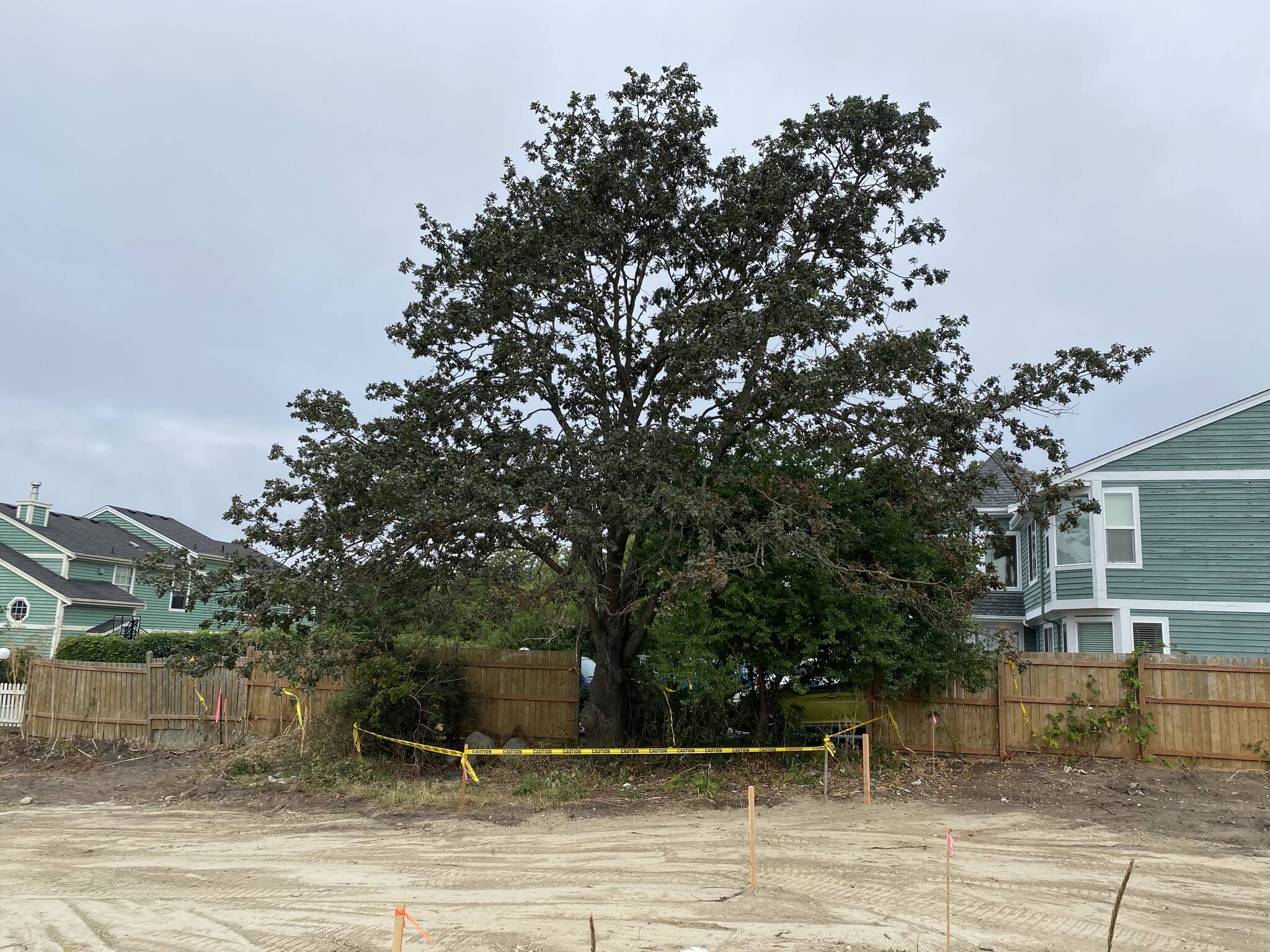The Oak Harbor Garry Oak Society, a nonprofit that protects and plants Garry oak trees, is bringing four instances of damaged Garry oaks to the city’s attention and asking staff to do a better job of protecting Oak Harbor’s namesake.
Laura Renninger, president of the Oak Harbor Garry Oak Society, explained that all the trees damaged during construction projects were older, mature trees. It takes Garry oaks 30 years to reach maturity and they can live hundreds of years if they are healthy.
The damages are in violation of a city code that was originally put in place in 1990, then amended in 2018, to protect Garry oaks from being cut down or damaged.
Garry oaks have a large underground root system that can be so expansive it extends beyond the tree’s canopy of branches. The area surrounding the trunk is known as the critical root zone. Heavy equipment traffic and storing construction materials near a Garry oak damages its root system.
All of the damaged trees are currently still living, but root damage can result in tree death over a long period of time, Renninger said.
The first incident occurred in the summer of 2019 on Melrose Drive. Boulder and construction debris were piled around an unprotected oak tree without a barrier fence.
The second incident occurred in January of 2021 on Ninth Avenue. A garage was built within several feet of an unprotected Garry oak tree and a truck parked in the critical root zone.
In March of this year, an oak tree was improperly pruned on Barrington Drive and heavy equipment for home demolition was parked right under the tree.
The most recent damage occurred in August of this year where an oak tree was not properly fenced off at a construction site.
Renninger said the city had issued permits for the construction in all of the cases except for the incident that occurred in March of this year.
“We need to ensure that Garry oak trees truly have the legal protection they’re entitled to,” she said. “This is not a new argument. Let’s do a better job.”
Renninger said the nonprofit is asking the city to identify any Garry oaks on a potential construction site and build a barrier fence before construction begins.
“If they still violate it, then we’re asking the city to actually implement some fines, which is what the city of Oak Bay does,” she said. “They do take it very seriously.”
She has been in contact with a similar nonprofit located in Oak Bay, British Columbia, a city also named for the Garry oak. Oak Bay has a detailed tree management plan to protect the oaks.
Renninger said Oak Bay has faced similar pressures from the need for housing and urban development that Oak Harbor has and that implementing a similar plan here is doable.
Another effort the Garry Oak Society has started is the Sound Oaks Initiative, a mapping project that has located several of the Garry oaks in the city and designates them as newly planted, living or dead. The trees are marked with dots; the size of the dot corresponds with the size of the tree. Not every single oak tree is on the map because some are on private land.
Renninger said the map is a work in progress but is still very helpful for identifying where the oaks are located. View the map at soundoaks.org.
“This is also a graphic example of how much tree death we’ve had in the last couple of decades,” she said.
Renninger said eventually the older, large trees will die off and not enough young trees have been planted to replace them.
One way people can help is by planting Garry oaks on their property if they have enough space. In exchange for a donation, homeowners can receive seedlings to plant an oak and information on how to do so. Learn more at ohgarryoaksociety.org.
“They’re more than just our green infrastructure, they are our heritage,” Renninger said. “They are what our town is named for and they’re tightly woven into our history.”



